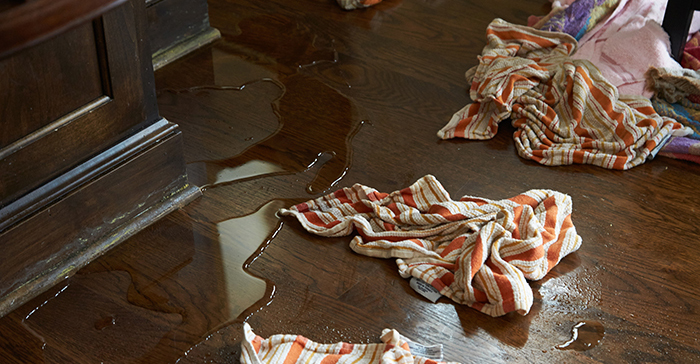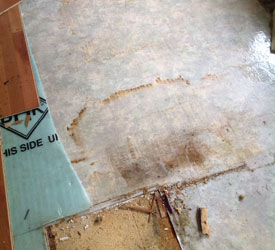Ways to Fix a Water-Damaged Wall in the Bathroom
Ways to Fix a Water-Damaged Wall in the Bathroom
Blog Article
How do you feel about How to Repair and Prevent Bathroom Water Damage?

The washroom is exceptionally vulnerable for moist accumulation and potential water damage because of the regular use of water in it. This short article uses basic assessment strategies to aid finding water damages threats.
The constant use water in the shower room makes it very prone for damp build-up and potential water damages. By checking it frequently, you can reduce water related problems.
The complying with set of inspections is very easy to do as well as ought to be done as soon as in every 3 months in order to keep your bathroom healthy and also to avoid potential water problems triggered by the bathtub, the shower, pipeline joints as well as plumbing, sinks, cupboards, and the commode
Do not overlook performing these examinations as well as be comprehensive while executing them. Bear in mind that these simple examinations can save you a lot of cash by offering very early indicators for water damage
Sinks and Cabinets
Sinks and also cupboards are subjected to moisture and also humidity daily and also are typically neglected. Inspect on a regular basis under the sink as well as on the countertop over it. Repair any kind of drip in the trap as it might suggest drainpipe problems. Check out the sink, sluggish draining pipelines may show a blocked drainpipe. Replace sink seals if they are split or loose.
Tub and Shower
The shower as well as bath tub need unique attention and also maintenance. Inspect the tiles as well as change if cracked. Make certain that there is no missing out on grout in between the tiles. Check and also replace split caulking at joints where the walls satisfy the flooring or the bathtub. Blocked drains pipes and pipelines issues will certainly avoid the bath tub from drying and also may suggest serious issues under the tub. Seek advice from an expert quickly to prevent structural damages. Pay attention to discolorations or soft locations around the bath tub walls as they may suggest an inner leakage.
Plumbing
Signs for water damage are difficult to find given that many pipes are mounted inside the wall surfaces.
Pay special attention to flooring as well as wall surfaces dampness and stains as they may suggest an unseen plumbing problem. Check wetness levels in adjacent areas too.
The Toilet
The toilet is a susceptible water junction. Inspect the water lines as well as look for leakages around the commode seat, in the hose, and under the water tank. If you spot any signs of wetness on the flooring around the commode, look for leaks in the toilet rim as well as storage tank seals.
Realize that hanging commode bowl deodorants enhances the opportunities for blockages.
Water Damage Signs In The Bathroom To Avoid Cleanup
Musty smell
This is one of the easiest signs to catch because musty smells are so odorous. The damp, earthy, moldy smell should be a big red flag. The smell will develop when moisture gets trapped in surfaces, and begins to facilitate mold growth. Leaking pipes under cabinets, inside walls, and behind shower fixtures will cause moisture to stay trapped and not dry, which will lead to mold growth and spread. As soon as you notice any musty smells in your bathroom, have it checked for hidden water damage and cleanup signs.
Visible mold
If the smell isn’t there to give it away, sometimes you will actually see mold growth. Finding mold in your bathroom is a serious problem, because mold is very harmful to your health. By the time mold growth is visible, it also means that water damage has already occurred and been present for some time. The only way the mold problem can be resolved is to find the source of the moisture and get it stopped. To safely and adequately remove mold, you need to have professionals handle the remediation. Do not waste any time in getting mold problems addressed, fixed, and sanitized so that you can protect you and your family from the many respiratory symptoms caused by mold exposure.
Damaged floors
Bathroom floors should be able to withstand some exposure to water while still remaining in good condition. However, when excess exposure or water leaks occur, they will begin to damage even the most water-resistant flooring. If you notice any cracking, bubbling, staining, or warping on your bathroom floors, there is probably a water leak somewhere causing the distortion. If you notice areas of the floor have become softer, or even have a spongy feeling, there is probably damage to the subfloor. Subflooring is typically made up of plywood. When plywood is exposed to water or moisture, it will absorb it. Once it has become saturated, the weight of the excess water will cause the wood to swell and soften. Check the floors in your bathroom frequently to catch any of these sings before they lead to damaged subflooring.
Changes on walls
When water leaks behind walls, it will cause changes in the drywall. Peeling plaster, blistering paint, and soggy wallpaper are all good indicators that excess water is building up behind the wall. Water leaking behind drywall will cause it to swell and be soft to the tough. If you start to notice gaps along the trim of your walls, or where tile meets the wall, it could also be a strong indicator that there is a leak behind the wall. Any changes, distortion, or damage on the walls should be evaluated as soon as you notice it to prevent further water damage and cleanup.

I recently found that blog post on Preventing Water Damage in the Bathroom while doing a search on the web. You should take the opportunity to share this blog if you enjoyed reading it. Thank you for taking the time to read it.
Set An Appointment Report this page